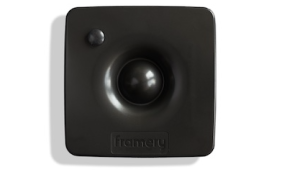Meet Arto Vahvenen.

At first glance, Arto may not look like the sort of person that could soon be transforming offices all around the globe.
But looks can be deceiving, because this softly-spoken former head of software concepting at Nokia (yes that really was his title), is on something of a mission – a mission to digitally transform offices.
“Most workplace tech isn’t helpful,” he claims, as TLNT starts to speak to him about the big elephant in the room when it comes to employers increasingly demanding staff return to the office: their resistance to enervating at-office tech. “Come back to what?” he asks rhetorically. “To the same out-dated systems and technology that wasn’t working for them to start with?”
To be fair, Arto has a point.
At a time when most employees have a distinctly icy relationship with their at-work digital experience, the lure of working from home has never been stronger.
It’s for precisely this reason that Arto argues return to work mandates simply won’t cut it (and aren’t cutting it), unless they are accompanied by a form of in-office technology that enhances rather than detracts from people’s everyday toil.
He’s now playing his part in changing this, by heading up Framery Labs – a developer of early-stage technology at Framery Labs – the research arm of pod manufacturer, Framery. TLNT readers might remember it recently unveiled its remarkable new pod that allows people thousands of miles apart to speak and interact with each other as if they’re in the same room. [Read our review of it here].
And to say that he really is taking on this challenge would be an understatement.
“Our heritage, initially in office furniture, has been a key driver in us wanting to work out how companies can build better places for companies, and solve common problems that are employee-related,” he says. “We’re particularly interested in how space is being used, and what solutions we can apply to improve it and make workspaces better.”
The output of this thinking are two intriguing technology concepts – concepts which if they prove to be successful, could soon be making their presence felt: Framery Pulse and Framery Pulse.
Are you sitting comfortably?
How do you know if your staff are feeling stressed?
Maybe their work is suffering, or they look overwhelmed, or they are not quite themselves.
Well, now, it’s possible to tell with a sensor that can be inserted into someone’s seat – yes, stress can literally be captured through someone’s bottom!
Simplistically-speaking, the in-seat sensor measures people’s heart rate variability (or HRV). HRV is scientifically-established to be directly related to someone’s level of stress. And, counter-intuitive though it may sound, as someone becomes more stressed, the variability of someone’s heart rate drops (and vice versa).
In of itself, the technology is not new, but according to Arto, the benefit of its system is that that it doesn’t require employees to have to think about wearing any health-technology themselves (such as wrist-watch style heart rate monitors), or any on-body technology that they might find invasive.
“Stress data collected anonymously can start to be correlated with other datasets, such as daily or weekly employee pulse surveys, or any other surveys that seek to measure how people are feeling day-to-day or week-to—week,” says Arto.
“CHROs can then start to see whether wellbeing dips seen in engagement surveys correlate with data from the Framery Pulse technology.”
Given burnout is something that creeps up on employees, technology like this has the potential to spot potential burnout long before it starts to become a problem.
Arto adds: “It you start looking at data weekly, HR professionals can start to see any trends emerging. You can also see if people say they’re not feeling stressed, but actually are according to our technology.”
He says: “Although the sensors are currently only in our own chairs (and they need to be connected to the cloud), there is no reason why it couldn’t be possible to have them on other chairs.”
Voice technology
But if you thought that was taking things to a different level, then arguably the most powerful innovation it’s also working on is something called Framery Voice.
Voice is tool that enables the ‘tone’ of meetings to be analysed in terms of the extent to which teams sound anxious, or subdued, or even dominated by just one or two people, to the exclusion of everybody else.
Its aim is to determine – more indelibly – whether time spent working together by people is a happy experience, or actually contributes to more stress and angst.
Over time, the promise is for it to even be able to observe and report on the culture of a business, by the quality of in-meeting interactions, and whether things are going in a good or worse direction over time.
If you stand back and think about it, this has huge potential, because the technology lends intelligence and comprehension to interactions that typically aren’t captured.
“Voice enables the tone of a meeting to be established; whether it was creating sadness, happiness, anger, those sorts of things,” say Arto.
“Algorithms look at intonation; the use of different words; whether someone is dominating – all things that are super-accurate in being able to deduce the overall sentiments being experienced during a meeting,” he says.
“In time,” he adds, CHROs will be able to identify what a ‘good’ meeting looks like – in terms of one that engages and enthuses people, rather than demotivates them. If dominant voices are taking over, managers can then look into ways of encouraging others to participate.”
Does it simply do what we already instinctively feel?
Detractors of this technology might reasonably ask whether this is really needed, given anyone with an ounce of intuition will all instinctively know whether a meeting has been positive, and upbeat, rather than one where the proverbial has hit the fan, and everyone’s having to explain why things are going badly.
There’s also the argument that one person’s perception of a stressful meeting might be someone else’s idea of a rallying one. Also, what if a meeting starts off bad, but then motivates people in the last ten minutes, and that’s the lingering sentiment people feel?
“All meetings have highs and lows, and some will end on a high, but even still, the technology will track it, and look to see how meetings progress on average, or every 15 minutes,” says Arto.
“The idea is simply about seeing how we can improve the way people work together.” He adds: “Users can be asked if the meeting was good or bad in a questionnaire afterwards, which will further teach the AI.”
In theory, if used in combination with the ‘Pulse’ technology, then meetings can also be analysed comparing the voice/intonation analysis with the actual stress levels people feel – creating an opportunity for a really rich vein of wellbeing data to be created.
“These are essentially tools helping leaders make workplaces better,” says Arto. At a time when employees may be anxious about technology being used to monitor their productivity (from how long they are working, to keystroke activity), this is arguably technology that could be working away in the background that can actually create a better working environment.
Other innovations are also in the offering. Framery has also developed ‘Connect’ (see below) which enables workers (via an app) to find a secure space to meet, by looking at room occupancy levels in real-time. Sensor data feeds into the web-based Connect platform, which allows organisations to easily view, understand and act on insights into how and when spaces are used.


Recent research shows employees who reported having greater control over where they worked report higher job satisfaction and more positive wellbeing. The data also shows providing employees with a meaningful choice between workplaces within an office had an even more positive influence than the choice between home and office working.
He concludes: “Too many tools are reactive. This is proactive. We’re trailing both products with selective customers right now, and we’re confident that both will start to provide some really useful insights for employers.”
